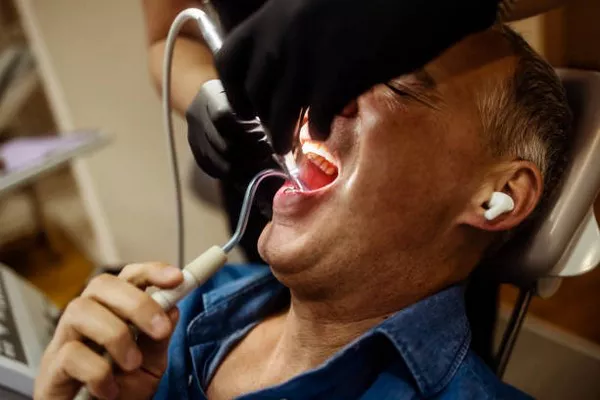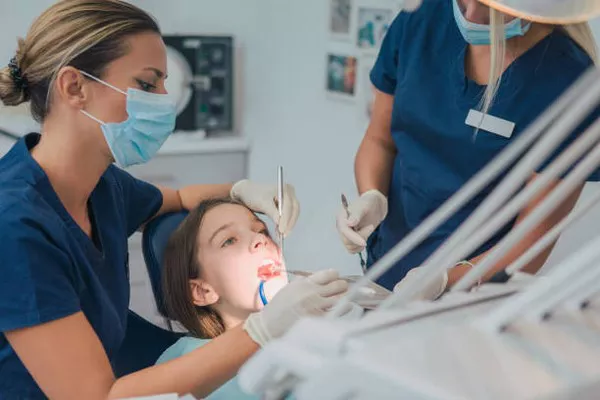Cavity fillings are a common dental procedure used to restore teeth affected by decay. However, despite their durability, fillings can sometimes fall out, leaving the tooth vulnerable to further damage. When this happens, it’s crucial to take immediate action to prevent complications and ensure proper dental care. In this article, we’ll explore what to do when a cavity filling falls out, the potential complications that may arise, preventive measures to avoid it in the future, and long-term care to maintain oral health.
Immediate Actions
If a filling falls out, it’s essential to take immediate steps to minimize discomfort and protect the affected tooth:
- Avoid Chewing on the Affected Side: Refrain from chewing on the side of the mouth where the filling has fallen out to prevent further damage to the tooth.
- Keep the Filling if Possible: If the filling comes out intact, try to keep it and bring it to your dental appointment. Your dentist may be able to reuse it, depending on the circumstances.
- Rinse with Salt Water: Gently rinse your mouth with warm salt water to help clean the area and alleviate any discomfort. Mix a teaspoon of salt in a glass of warm water and swish it around your mouth for about 30 seconds before spitting it out.
Contacting a Dentist
After a filling falls out, it’s essential to contact your dentist as soon as possible to schedule an appointment for a replacement filling. Even if you’re not experiencing any pain, it’s crucial to address the issue promptly to prevent further complications. Delaying treatment can increase the risk of infection, decay, and additional damage to the tooth.
When contacting your dentist, provide details about the situation, such as when the filling fell out, any symptoms you’re experiencing, and whether you were able to save the filling. Your dentist will assess the tooth and determine the appropriate course of action to restore it.
Pain Management
Losing a filling can cause discomfort or sensitivity in the affected tooth. While waiting for your dental appointment, you can try the following methods to manage pain:
- Over-the-Counter Pain Relievers: Non-prescription pain relievers such as ibuprofen or acetaminophen can help alleviate mild to moderate pain. Follow the recommended dosage instructions and consult with your pharmacist or healthcare provider if you have any concerns.
- Home Remedies: Clove oil, known for its natural numbing properties, can provide temporary relief from toothache. Apply a small amount of clove oil to a cotton ball and gently dab it onto the affected area. Avoid applying clove oil directly to the gums, as it can cause irritation.
- Avoid Extreme Temperatures: Avoid consuming foods and beverages that are too hot or too cold, as they can trigger sensitivity and discomfort in the exposed tooth.
Potential Complications
Losing a filling can lead to various complications if left untreated:
- Increased Sensitivity: Exposed tooth surfaces may become more sensitive to hot, cold, sweet, or acidic foods and beverages.
- Pain and Discomfort: Without the protective barrier provided by the filling, the underlying tooth may be more susceptible to pain, especially when chewing or biting down.
- Risk of Further Decay: A cavity filling falls out, leaving the tooth vulnerable to bacterial infection and decay. Without prompt treatment, decay can progress, leading to more extensive damage and potential tooth loss.
It’s essential to address these complications promptly by contacting your dentist and scheduling a replacement filling as soon as possible.
Preventive Measures
While some instances of filling loss are unavoidable, there are steps you can take to reduce the risk:
- Practice Proper Oral Hygiene: Brush your teeth twice a day with fluoride toothpaste and floss daily to remove plaque and food particles that can contribute to decay.
- Avoid Hard Foods: Be mindful of eating hard or sticky foods that can put excessive pressure on your teeth and increase the likelihood of fillings coming loose.
- Regular Dental Check-ups: Visit your dentist regularly for check-ups and professional cleanings. Your dentist can monitor the condition of your fillings and detect any issues early on.
- Address Teeth Grinding: If you grind or clench your teeth, known as bruxism, discuss treatment options with your dentist. Bruxism can put stress on fillings and increase the risk of damage.
Understanding the Causes
Several factors can contribute to a cavity filling falling out:
- Decay: If decay develops around the edges of a filling, it can weaken the bond between the filling and the tooth, causing it to dislodge.
- Wear and Tear: Over time, fillings may wear down or become damaged due to normal biting and chewing forces. This can result in the filling loosening or falling out entirely.
- Biting Down on Hard Objects: Accidentally biting down on hard objects, such as ice, pens, or hard candies, can fracture or dislodge a filling.
- Poorly Fitted Fillings: If a filling is not properly placed or fitted, it may not adhere securely to the tooth, increasing the likelihood of it falling out.
Temporary Solutions
While waiting for your dental appointment, you can use temporary measures to protect the exposed tooth:
- Dental Wax: Dental wax, available at most pharmacies, can be applied to the exposed tooth surface to provide a temporary barrier and alleviate discomfort.
- Temporary Filling Material: Over-the-counter temporary filling materials are available for temporary repair of lost fillings. Follow the instructions carefully for safe and effective use.
- Avoiding Certain Foods: In addition to avoiding hard foods, you may want to avoid foods that are particularly sticky or chewy, as they can adhere to the exposed tooth surface and cause further discomfort.
Long-Term Care
Maintaining long-term oral health involves regular dental care and preventive measures:
- Regular Dental Check-ups: Schedule routine dental check-ups every six months or as recommended by your dentist. These appointments allow your dentist to monitor the condition of your fillings and address any issues promptly.
- Professional Cleanings: Professional cleanings help remove plaque and tartar buildup that can contribute to decay and gum disease. Your dental hygienist can also provide personalized oral hygiene recommendations.
- Addressing Dental Concerns Promptly: If you experience any dental issues or discomfort, such as tooth pain or sensitivity, don’t hesitate to contact your dentist for evaluation and treatment.
- Healthy Lifestyle Habits: Maintain a balanced diet, limit sugary snacks and beverages, and avoid tobacco products to reduce the risk of dental problems.
Conclusion
When a cavity filling falls out, it’s important to take immediate action to minimize discomfort and prevent further complications. Contact your dentist promptly to schedule a replacement filling and follow their recommendations for pain management and temporary solutions. By practicing good oral hygiene, avoiding damaging habits, and seeking regular dental care, you can help protect your fillings and maintain a healthy smile for years to come.
FAQs About Lost Fillings
1. How long can you leave a filling that has fallen out?
Ideally, you should not leave a filling that has fallen out for an extended period. It’s crucial to contact your dentist as soon as possible to schedule an appointment for a replacement filling. Leaving the tooth unprotected can increase the risk of sensitivity, pain, and further damage.
2. Is it normal for a cavity filling to fall out?
While cavity fillings are designed to be durable, it is not uncommon for them to fall out under certain circumstances. Factors such as decay, wear and tear, or biting down on hard objects can weaken the bond between the filling and the tooth, leading to its loss. If a filling falls out, it’s essential to address the issue promptly to prevent complications.
3. Is it an emergency if a filling falls out?
Losing a filling is considered a dental emergency, although the urgency may vary depending on the individual’s symptoms and circumstances. While it may not require immediate medical attention, it’s essential to contact your dentist as soon as possible to schedule a replacement filling. Delaying treatment can increase the risk of further damage to the tooth and potential complications.
4. Can I eat if my filling falls out?
It’s generally advisable to avoid eating on the side of the mouth where the filling has fallen out to prevent further damage to the tooth. Stick to soft foods that are easy to chew and won’t put excessive pressure on the affected area. Additionally, avoid consuming foods that are too hot or too cold, as they may exacerbate sensitivity in the exposed tooth. Contact your dentist for further guidance on dietary restrictions until the filling is replaced.





























